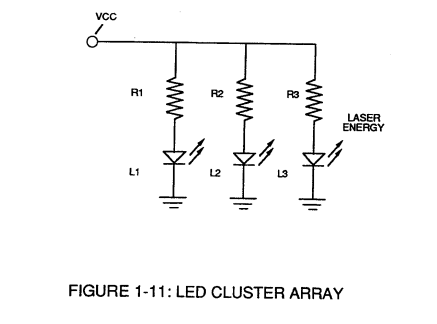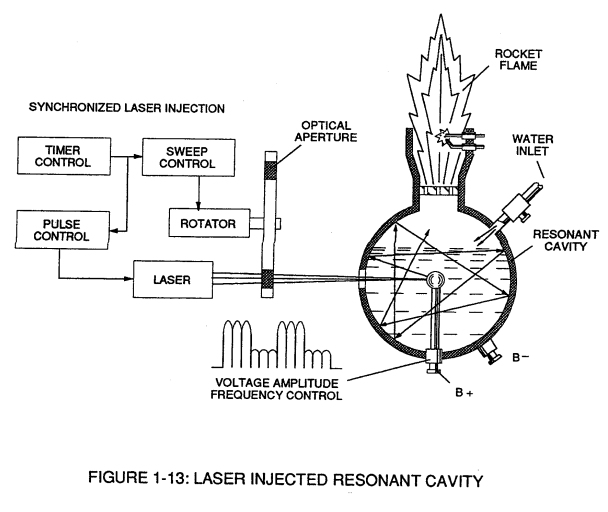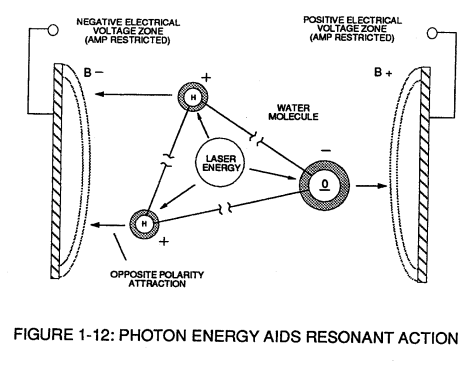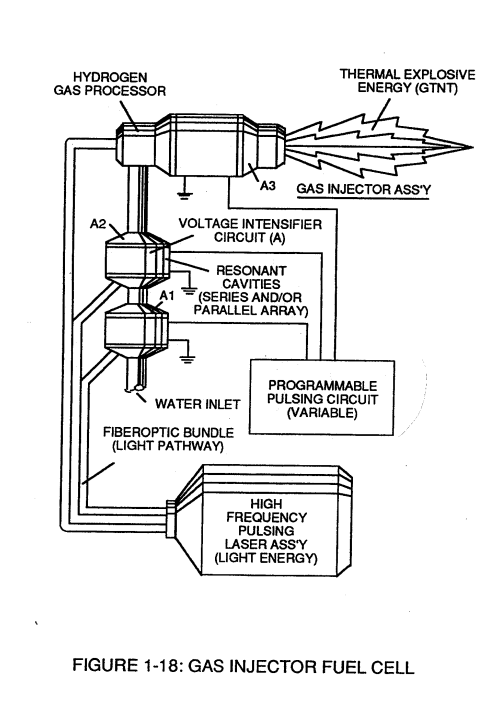Laser Interaction
 Light-emitting diodes arranged in a Cluster-Array (see Figure 1-11) provides and emits a narrow band of visible light energy into the voltage stimulated water bath, as illustrated in Figure (1-13) as to Figure (1-12).
Light-emitting diodes arranged in a Cluster-Array (see Figure 1-11) provides and emits a narrow band of visible light energy into the voltage stimulated water bath, as illustrated in Figure (1-13) as to Figure (1-12).
|
Figure (1-13) |
Figure (1-12) |
The absorbed Laser Energy (Electromagnetic Energy) causes many atoms to lose electrons while highly energizing the liberated combustible gas ions prior to and during thermal gas-ignition.
Laser or light intensity is linear with respect to the forward current through the LEDs, and, is determined by:
Where
I led is the specified forward current (typically 20ma. per diode); V led is the LED voltage drop (typically 1.7 volts for red emitters).
Ohm's Law for LED circuit in parallel array, and is given by (Eq 16)
Where
(It) is the forward current through LED cluster-Array: Vcc is volts applied (typically 5 volts).
Whereby
Laser or light intensity is variable as to duty cycle on/off pulse-frequency from 1Hz to 65 Hz and above is given by
(Eq 17)
 Le is light intensity in watt;
Le is light intensity in watt;
T1 is current on-time;
T2 is current off-time;
and (ION)=RMS value of load current during on-period.
Injecting Laser Energy into the Electrical Polarization Process and controlling the intensity of the light-energy causes the Combustible Gases to reach a higher energy-state (electromagnetically priming the combustible gas ions) which, in turn, accelerates gas production while raising gas-flame temperatures beyond "normal" gas-burning levels.
Injecting "Electromagnetically Primed" and "Electrically Charged" combustible gas ions (from water) into other light-activated Resonant Cavities further promotes gas-yield beyond voltage/laser stimulation, as illustrated in Figure (1-16) as to Figure (1-18).





